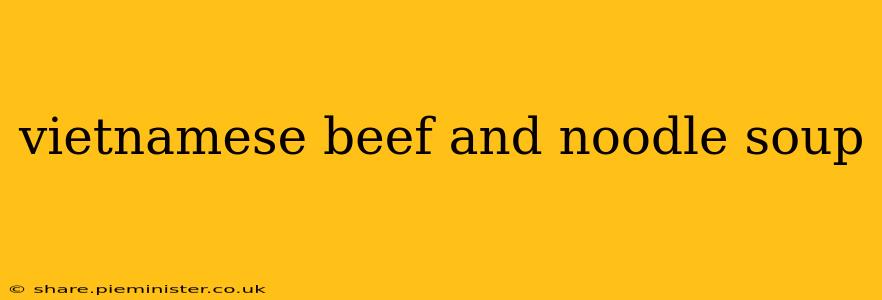Pho. The very word evokes images of steaming bowls, fragrant broth, and the comforting warmth of Vietnamese cuisine. This iconic dish, a national treasure of Vietnam, is far more than just a soup; it's a culinary experience steeped in history, tradition, and a captivating blend of flavors. Let's explore the world of pho, uncovering its secrets and answering some frequently asked questions.
What is Pho?
Pho (pronounced "fuh") is a Vietnamese noodle soup traditionally made with a rich, flavorful broth, often simmered for hours with spices, aromatics, and sometimes beef bones. This broth is then served with rice noodles, thinly sliced beef (or chicken, for variations), fresh herbs like basil and cilantro, and often bean sprouts and lime wedges. The combination of these elements creates a harmonious symphony of tastes and textures, perfectly balanced and deeply satisfying. It's a dish that's both incredibly comforting and surprisingly complex.
What are the different types of Pho?
While Pho Bo (beef pho) is the most well-known, variations exist to cater to diverse palates. The key differences lie primarily in the type of meat used:
- Pho Bo (Beef Pho): The classic, featuring various cuts of beef like rare steak, well-done flank, brisket, and meatballs.
- Pho Ga (Chicken Pho): A lighter, equally delicious alternative using chicken broth and chicken meat.
- Pho Tai (Rare Beef Pho): Focuses on thinly sliced rare beef, cooked gently by the hot broth.
- Pho Dac Biet (Special Pho): Often includes a combination of different beef cuts for a complete tasting experience.
What makes Pho Broth so flavorful?
The secret to phenomenal pho lies in its broth. The process is often a labor of love, involving a long simmering time with a complex blend of ingredients:
- Bones: Often beef bones, sometimes including oxtail for richness.
- Spices: Star anise, cloves, cinnamon, cardamom, and black peppercorns create the signature aromatic base.
- Aromatics: Onions, ginger, and garlic add depth and complexity to the flavor profile.
- Fish Sauce: A crucial ingredient that imparts a savory umami note.
- Rock Sugar: Balances the savory elements and adds a subtle sweetness.
The precise combination of ingredients and simmering time varies by family recipe, contributing to the unique character of each bowl.
How is Pho served and eaten?
Pho is typically served in a large bowl, allowing for generous portions of noodles and meats. The diner then customizes the dish to their preference:
- Fresh Herbs: Basil, cilantro, and mint are added for freshness and aroma.
- Bean Sprouts: Add a delightful crunch and slight sweetness.
- Lime Wedges: A squeeze of lime brightens the flavors and adds a citrusy tang.
- Chili: For those who prefer a spicy kick.
- Hoisin Sauce/Sriracha: These sauces add a touch of sweetness and heat, respectively.
The act of assembling and enjoying pho is part of its charm, a personalized experience that reflects the diner's preferences.
Is Pho healthy?
Pho can be a relatively healthy meal, particularly when prepared with lean meats and plenty of fresh vegetables. The broth itself is packed with nutrients from the bones and aromatics. However, the nutritional value can vary depending on the ingredients and portion sizes, especially if heavy on rich meats or added sauces.
Where can I find authentic Pho?
The best way to find authentic Pho is to seek out Vietnamese restaurants, particularly those with a family-run history. Look for places that prioritize fresh ingredients and traditional cooking methods. Reviews from other diners can also provide valuable insights.
Conclusion
Pho is more than just a soup; it's a cultural icon, a testament to Vietnamese culinary ingenuity, and a deeply satisfying culinary experience. The next time you find yourself enjoying a bowl, take a moment to appreciate the history, the craftsmanship, and the delicious complexity that goes into this beloved dish.
